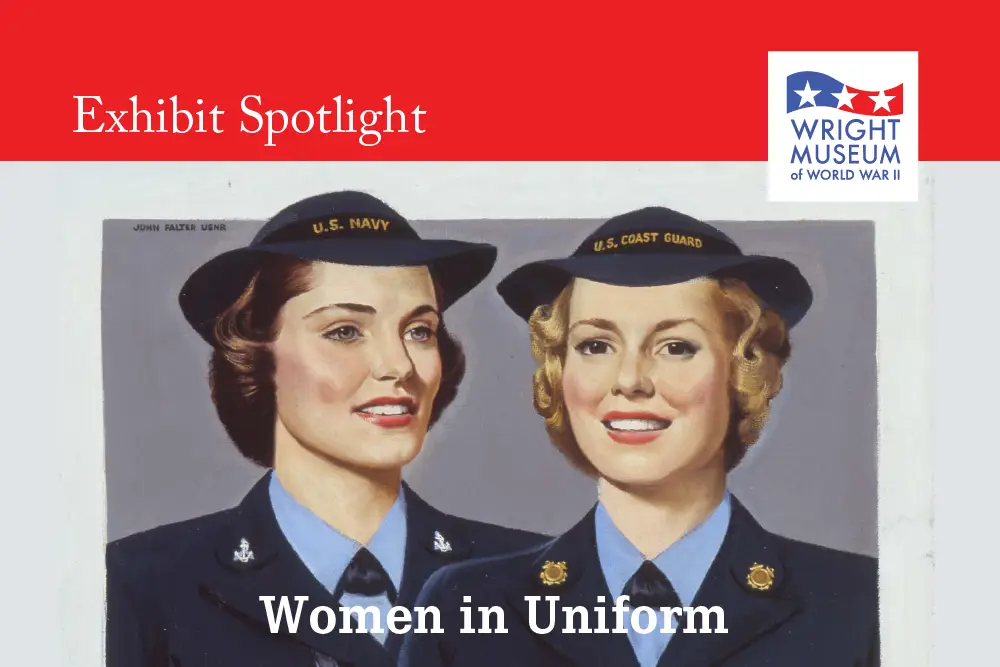We’ve all heard of Rosie the Riveter. We know that during World War II women entered the U.S. workforce in record numbers, taking on many roles previously filled only by men. In fact, according to History.com, in 1943 roughly 65% of the United States’ aircraft industry was comprised of women. On the home front, six million women served in factories and three million volunteered with the Red Cross during the war. By all accounts, women were a critical factor in the Allied forces eventual victory.
In fact, the United States utilized women almost from the very start. According to the Defense Logistics Agency, “between 1940 and 1945, the female percentage of the U.S. workforce increased from 27 percent to nearly 37 percent, and, by 1945, nearly one out of every four married women worked outside the home.” While the Axis powers were much slower to warm to the idea of putting women to work, the United States, with the urging of First Lady Eleanor Roosevelt and General George Marshall, were actively working in support of the idea of women in military uniform.
In 1941, Congresswoman Edith Nourse Rogers of Massachusetts introduced a bill to create a women’s auxiliary army, which Congress approved almost exactly one year later. Thus, in 1942 the Women’s Auxiliary Army Corps (WAAC) was created, though it was not integrated into the Army and would not be given full military status until 1943 when its name changed to the Women’s Army Corps (WACS). Though the Army was the first branch to introduce women to military service, the other branches quickly followed suit, with the Navy’s Women Accepted for Volunteer Emergency Service (WAVES) and the Marine Corps’ Women’s Reserves forming in July 1942, just two months after Congress approved the creation of WAAC. By early 1943, the Coast Guard had created the SPARS and the Air Force (still part of the Army) had begin utilizing women in aviation roles through its WASPs program. WASPs were the only women’s military group formed during World War II that were not given military status in wartime because the Army Air Corps did not employ women. It took until 1977 for their military status to be recognized and made official. In addition to these roles, women also served in both the Army Nurse Corps and the Navy Nurse Corps.
The Navy’s WAVES accepted women between the ages of 20 and 36, with the Army accepting women up to the age of 50. Most served in uniform back at home, though WASPs did deliver aircraft to forward operating theaters and the Army was the only branch that was allowed to send women overseas. Nurses also served overseas, with 1,600 nurses decorated for bravery under fire during the war. In total, nearly 350,000 women served in uniform over the course of World War II, with 16 killed as a direct result of enemy fire and 565 WACS winning combat decorations in the Pacific Theater.
According to the Defense Logistics Agency, the first U.S. women to see combat became POWs when they were captured at the fall of Corregidor in May 1942. In total, 77 Army and Navy nurses were taken captive. They spent their captivity running the camp hospital at Santo Tomas Internment Camp in Manila. All 77 survived and were liberated in January 1945. Women were a vital part of the Allied victory. D-Day Supreme Commander Dwight D. General Eisenhower acknowledged the critical role women played in the success of D-Day stating, “The contribution of the women of America, whether on a farm or in the factory or in uniform, to D-Day was a sine qua non of the invasion effort.”
At the war’s end, women returned home, most to the traditional roles women had played prior to World War II. Still, the contributions women made in uniform could not be completely ignored. In 1948, Congress passed the Women’s Armed Services Integration Act, officially establishing women as a permanent part of the United States military.
The Wright Museum is honored to be the home for a traveling exhibit courtesy of the Naval History and Heritage Command titled “Women in Uniform.” This exciting exhibit features works of art that depict Navy military personnel and the wide-ranging and varied occupations women have held as they continue to push the boundaries of prospects available to them. Women have been proudly serving their country since its inception, and we are truly honored to have an opportunity to commemorate their service in uniform through this exhibit.
The exhibit runs from May 1 to October 31, 2024.
Information in the above blog, plus much more, can be found by visiting the following websites:




